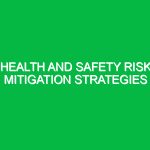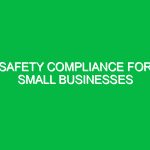Introduction to Safety Culture Assessment Tools
Safety Culture Assessment Tools are essential instruments used to evaluate and enhance the safety culture within organizations, especially in the Health, Safety, and Environment (HSE) domain. But what exactly does this mean? At its core, safety culture refers to the shared values, beliefs, and practices that shape the way safety is approached within an organization. It can significantly influence how employees perceive risks, report incidents, and comply with safety protocols.
Imagine a construction site bustling with activity. Every worker on that site understands the importance of safety, not just because it’s mandated, but because it’s ingrained in the company’s culture. However, in environments where safety is treated as a mere obligation rather than a core value, the risk of accidents and incidents increases dramatically. This reality underscores the relevance of tools designed to assess and cultivate safety culture.
In this article, we will explore the various Safety Culture Assessment Tools, their application in identifying hazards, the risks associated with their use, best practices for implementation, and the regulatory framework that governs them.
Identifying Hazards and Risks Associated with Safety Culture Assessment Tools
Safety Culture Assessment Tools themselves can introduce specific risks if not properly managed. These tools often involve surveys, interviews, and observations, which can expose organizations to several hazards:
1. Misinterpretation of Data
Data collected through surveys or interviews may be misinterpreted, leading to misguided conclusions about the safety culture. For instance, if employees feel pressured to provide favorable responses, the results may reflect a false sense of security concerning safety practices. This misrepresentation can result in inadequate safety measures being implemented, thereby increasing the risk of workplace accidents.
2. Resistance to Assessment
Employees may resist the assessment process due to fear of repercussions, particularly if they believe that their feedback could lead to disciplinary actions. If workers perceive these tools as punitive rather than constructive, they may withhold vital information about safety concerns. This resistance can compromise the integrity of the assessment and ultimately undermine the goal of enhancing safety culture.
3. Overemphasis on Quantitative Metrics
Many organizations rely heavily on quantitative metrics derived from Safety Culture Assessment Tools, which can lead to overlooking qualitative aspects of safety culture. For instance, a company might focus on achieving a specific score rather than understanding the underlying issues that contribute to safety challenges. This narrow focus can result in superficial changes that do not address the root causes of safety problems.
Best Practices and Safety Precautions in Using Safety Culture Assessment Tools
To mitigate the risks associated with Safety Culture Assessment Tools, organizations should adopt best practices and safety precautions. Here are some actionable strategies:
1. Foster an Open Environment
Creating a culture of openness is paramount. Employees should feel safe to express their thoughts without fear of retaliation. Regularly communicating that feedback is valued and essential for safety improvement can encourage honest responses. Additionally, organizations can host anonymous surveys or suggestion boxes to further promote candidness.
2. Ensure Clear Communication
To avoid misinterpretation, it’s crucial to clearly communicate the purpose and process of the assessment tools. Employees need to understand that the goal is not to blame but to identify areas for improvement. Providing training sessions or workshops can help clarify any misconceptions about the assessment process.
3. Incorporate Qualitative Assessment
While quantitative metrics are valuable, qualitative insights should not be neglected. Incorporating focus groups or one-on-one interviews can provide deeper insights into the safety culture. For example, asking open-ended questions can elicit detailed feedback that sheds light on underlying issues that numbers alone might not reveal.
4. Regular Reassessment
Safety culture is not static; it evolves over time. Therefore, organizations should commit to regular reassessment using Safety Culture Assessment Tools. This ongoing process allows for the identification of trends and shifts in employee perceptions, enabling timely interventions to address emerging issues.
5. Involve Leadership
Leadership plays a crucial role in shaping safety culture. Engaging leaders in the assessment process can demonstrate a commitment to safety and encourage employees to take the process seriously. Leaders should not only support the assessments but actively participate in discussions about the findings and subsequent actions.
Regulatory Framework Governing Safety Culture Assessment Tools
The use of Safety Culture Assessment Tools is often guided by various regulations and standards. Understanding these can help organizations align their assessment efforts with legal and ethical obligations.
1. Occupational Safety and Health Administration (OSHA)
In the United States, OSHA outlines general duty clauses that require employers to provide a workplace free from recognized hazards. While OSHA does not mandate specific Safety Culture Assessment Tools, it supports initiatives that enhance workplace safety culture.
2. ISO 45001
ISO 45001 is an international standard for occupational health and safety management systems. It emphasizes the importance of a positive safety culture and encourages organizations to assess their culture as part of their management processes. This standard provides a framework for organizations to evaluate their safety practices systematically.
3. National Safety Council (NSC)
The NSC offers resources and guidelines to promote safety culture across various industries. Their tools and training programs can help organizations implement effective Safety Culture Assessment Tools tailored to their specific needs.
Conclusion
Safety Culture Assessment Tools are invaluable assets in the HSE domain, enabling organizations to evaluate and enhance their safety culture. However, as with any tool, they come with inherent risks that must be managed carefully. By fostering an open environment, ensuring clear communication, incorporating qualitative assessments, committing to regular reassessments, and involving leadership, organizations can effectively leverage these tools to create a safer workplace.
Understanding the regulatory framework surrounding these assessments further reinforces their importance. As industries strive for continuous improvement in safety, investing in Safety Culture Assessment Tools not only protects employees but also enhances organizational resilience and reputation. In the end, a robust safety culture is not just about compliance; it’s about cultivating an environment where safety is a shared value and a collective responsibility.


